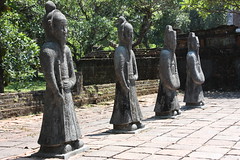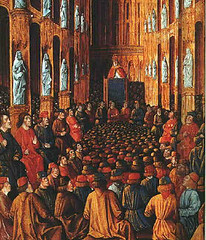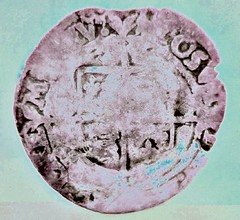
Guardians
Originally uploaded by arjayempee
(Similar to the Teracotta Warriors in China, these figures stand guard within Emperor Tu Duc's tomb complex.)
Prince Nguyễn Phúc Hồng Nhậm was born on 22 September 1829, and succeeded his father on the throne, with the reigning title of Tự Đức. His father, Thiệu Trị had passed over his more moderate eldest son, Hồng Bảo, to give the throne to Tự Đức, known for his staunch Confucianism and opposition to foreigners and innovation. The Nguyễn Dynasty were not particularly popular and opposition rallied to Hồng Bảo, who led a rebellion against his brother. Tự Đức suppressed the rebellion and imprisoned his brother, who killed himself.
Tự Đức continued the policies of his predecessors, shutting Vietnam off from the outside world and refusing all efforts to modernise the country. Accounts of his personal life show a gentle and educated man, but his policies brought on conflict with Europe that Vietnam could not win. He oppressed all foreigners in Vietnam, especially the Christian community, calling their religion a "perverse doctrine". The Christian mandarin Nguyễn Truong To, tried to convince Tự Đức that this was a suicidal policy, but he did not listen, confident that France was too involved with the chaos in Europe in 1848 to respond, but he was mistaken.
France responded with a large military expeditionary force. The Nguyễn army fought bravely for some time, but their antiquated weapons and tactics were no match for the French, who suffered more from the climate and disease than from enemy resistance. With French forces moving closer, Tự Đức called upon his Chinese over-lord, the Qing Great Khan, for help and so ensued the Sino-French War. The fighting around Hanoi against China and the Black Flag pirates ended with France victorious and the Chinese gave up their position as feudal masters of Vietnam and recognised France as the ruling power over the region - a significant moment in the history of the region.









